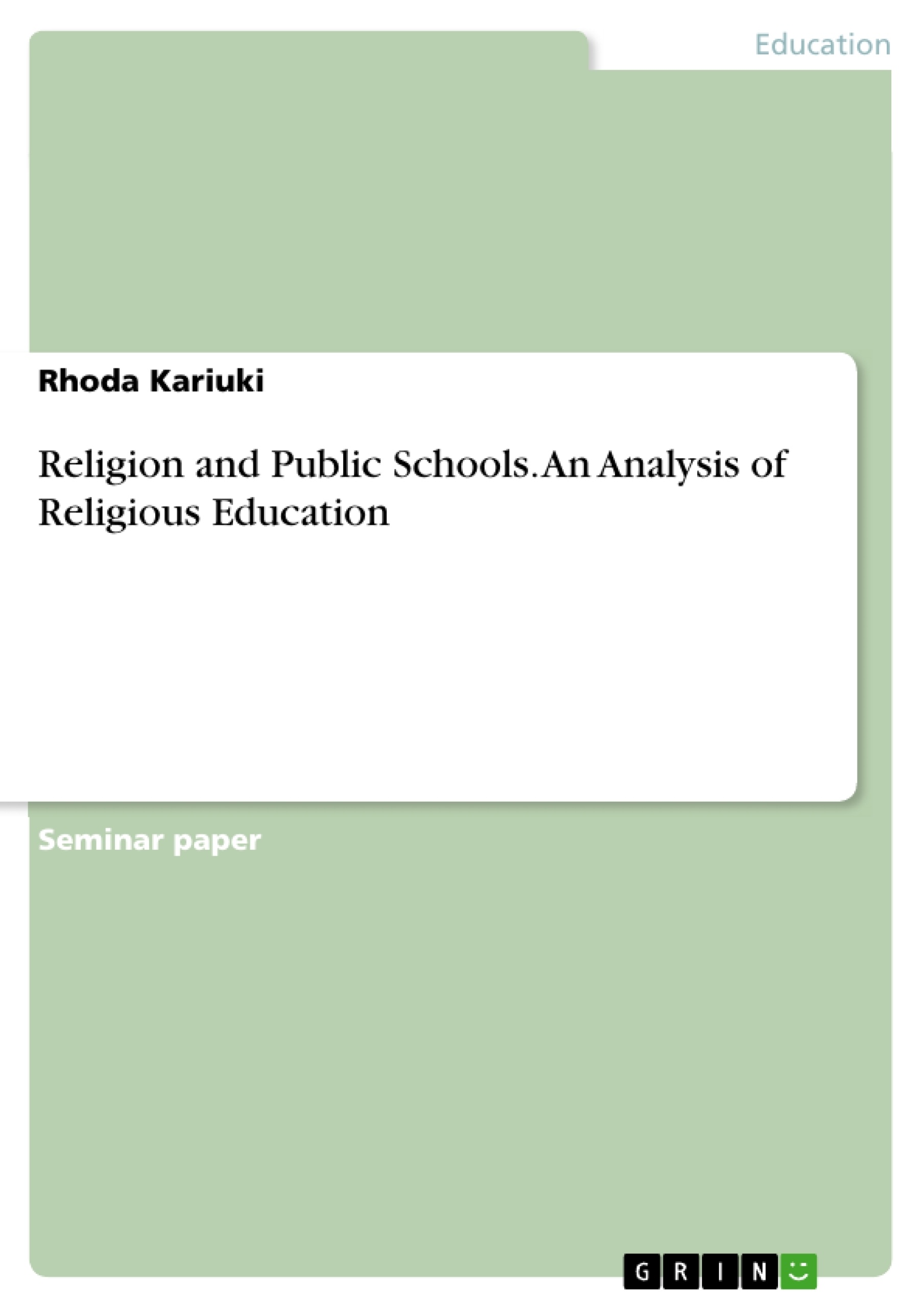Millions of parents entrust everyday teachers in public schools with the education of their children, who are all from diverse religious backgrounds. Therefore teachers need to be fully aware and informed about the educational and constitutional principles, which will guide and help them comprehend the role of religion in public education.
This guide for teachers intends to overcome the conflicts and confusion surrounding religion in public schools since the beginning of the common school movement. Since ancient times, the debate has been shaped by two extremes. One of them is those who advocate for public schools to include their religious studies, policies, and practices. The other advocates for public schools to be viewed and treated as a religious-free zone.
Inhaltsverzeichnis (Table of Contents)
- Religion and Public Schools
- Analysis of Religious Education
- Methodology
Zielsetzung und Themenschwerpunkte (Objectives and Key Themes)
This guide aims to clarify the role of religion in public education, navigating the complex historical debate and constitutional principles surrounding it. It seeks to provide teachers with a comprehensive understanding of how to incorporate religion into the curriculum in a respectful and inclusive manner.
- The Constitutional Framework of Religious Education in Public Schools
- The Importance of Teaching About Religion, Not Teaching Religion
- The Significance of Diversity and Religious Freedom in Education
- The Role of Religion in Shaping American History and Identity
- The Impact of Controversial Curricula on the Teaching of Religion
Zusammenfassung der Kapitel (Chapter Summaries)
- Religion and Public Schools: This chapter introduces the historical debate surrounding the role of religion in public education, highlighting the contrasting perspectives on religious inclusion and exclusion in schools. It emphasizes the need for a balanced approach that respects religious liberty and diversity while upholding the First Amendment.
- Analysis of Religious Education: This chapter examines the constitutional basis for religious education in public schools, drawing on Supreme Court rulings and highlighting the educational benefits of including religious studies in the curriculum. It argues that such inclusion fosters cross-cultural understanding and a more comprehensive understanding of history and society.
- Methodology: This chapter provides practical guidance for teachers on how to approach religious education in their classrooms. It emphasizes the importance of focusing on "teaching about religion" rather than "teaching religion," ensuring objectivity, and avoiding proselytizing or promoting specific faiths. The chapter also explores the implications of the First Amendment Establishment Clause on teacher conduct in relation to religion.
Schlüsselwörter (Keywords)
The text primarily focuses on the intersection of religion and public education, exploring key concepts such as religious freedom, the First Amendment, curriculum development, and the significance of diversity in education. It examines the role of religion in shaping American history and the implications of controversial historical narratives, such as the 1619 and 1776 projects, on the teaching of religion in schools.
- Quote paper
- Rhoda Kariuki (Author), 2023, Religion and Public Schools. An Analysis of Religious Education, Munich, GRIN Verlag, https://www.hausarbeiten.de/document/1375123


